What is the Scandi Decor?
Scandi Decor originated and flourished within the Nordic countries, encompassing Sweden, Finland, Denmark, Iceland, and Norway. However, it was in Sweden during the 18th century that the foundations of this style were laid.
During that time, King Gustav III embarked on a journey to France, where he was captivated by the opulence of the local palaces. Upon his return, he aspired to adorn his own residence with the same lavishness characteristic of Rococo and Baroque styles. However, he encountered two significant challenges: the lack of sufficient funds for such grandeur and the prevalence of dark and sad hues in the Baroque style, which imparted a gloomy atmosphere to the interiors.
In light of these obstacles, the Versailles-inspired style underwent adaptations to offer a more affordable alternative, tailored to the local climate. Thus, the renowned Gust avian style was born, named in honor of the king. This design aesthetic is characterized by a light and natural color palette, white walls, graceful furniture with smooth contours, intricate wood carvings, and striking lamps complemented by understated natural textiles.
What color wood is Scandi Decor?
The Scandinavian palette uses light colors, white, light grays, and soft neutrals. Wood tones are also light, traditionally using maple, ash, or white oak for natural hues.
What is the best color for Scandinavian walls?
Use the landscape as your mood board when combining colors; layering whites, greys, muted natural tones, or light shades of greens and blues brings the calm and tranquillity that is so often found inside Scandinavian homes.
What colors are in Scandinavian decor?
The Scandinavian Minimalism Color Collection is packed with clean, light hues that make the most out of minimal color. Cool neutrals and warm beiges are the foundation of this palette, while muted green and blonde tones add an organic feel, like tall grass under a morning fog.
What color are Scandinavian floors?
Whitewashed wood floors, in particular, are an excellent choice—specifically whitewashed pine floors. Man
other light wood species like white oak are heavily embraced in the Scandinavian style.
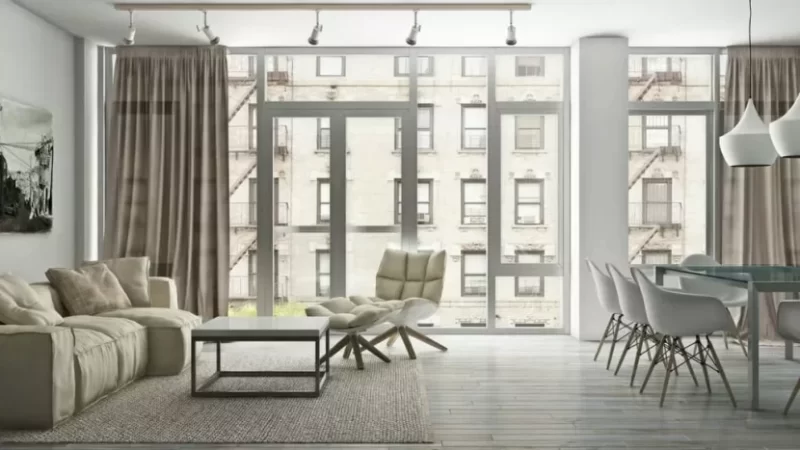
The Scandinavian style as we know it today took shape after the conclusion of World War II. The aftermath of the war necessitated the provision of new housing for the affected population in European cities. Consequently, factories sought solutions for manufacturing functional, cost-effective, and practical furniture.
During this time, young designers, including luminaries such as Arne Jacobsen, Paul Henningsen, and Hans Wegner, emerged to tackle this challenge, infusing a distinctive aesthetic into the realm of furniture design.
Fundamental principles and key elements
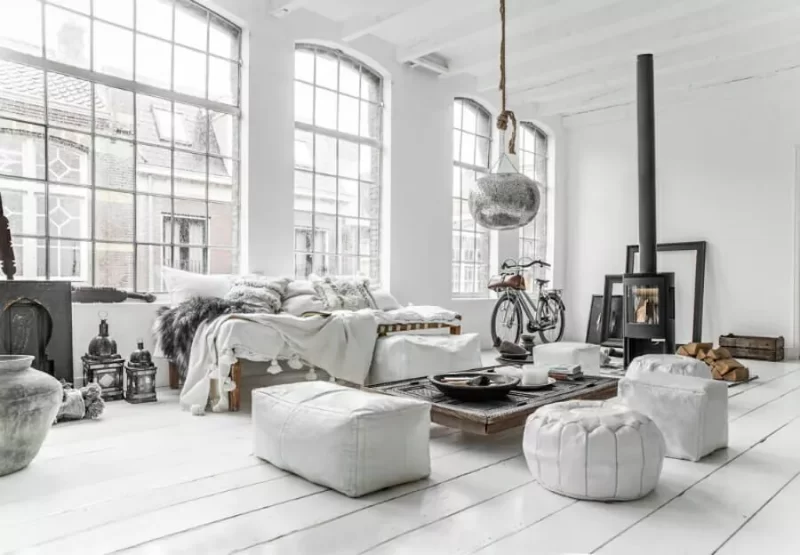
The principles of the Scandinavian style have evolved in harmony with these underlying concepts. Let us now explore them from a more focused perspective.
- Simplicity and Minimalism: Scandinavian interiors exude a sense of simplicity, free from excessive ornamentation. Clean lines, uncluttered spaces, and a minimalist approach create an atmosphere of calmness and clarity.
- Natural Elements: Drawing inspiration from the stunning Nordic landscapes, the use of natural materials such as wood, stone, and leather takes center stage. This connection to nature infuses warmth and organic beauty into the living spaces.
- Light and Airiness: Scandinavian design emphasizes the importance of maximizing natural light. Light-colored walls, large windows, and the strategic placement of mirrors amplify the sense of brightness and airiness within rooms.
- Functional Design: Form follows function in the Scandinavian style. Furniture and decor items serve practical purposes without compromising aesthetics. Smart storage solutions and multi-functional pieces are favored to optimize space.
- Harmonious Color Palette: Soft, muted tones dominate the color palette, with whites, grays, and earthy hues taking precedence. This understated color scheme allows for a serene and cohesive ambiance.
- Cozy Textures: To enhance the sense of comfort, indulgent textures like faux fur, knit blankets, and plush rugs are incorporated. These elements invite tactile experiences and create an inviting atmosphere.
Colors and prints
In Scandinavian interiors, color preferences are deeply influenced by a phenomenon known as geographic determinism. Climate plays a significant role in shaping the environment of homes and apartments. With limited sunlight, few warm days throughout the year, cloudy weather, and the presence of harsh northern landscapes, the prevailing conditions often create an atmosphere that can be closely associated with feelings of gloom and even depression.
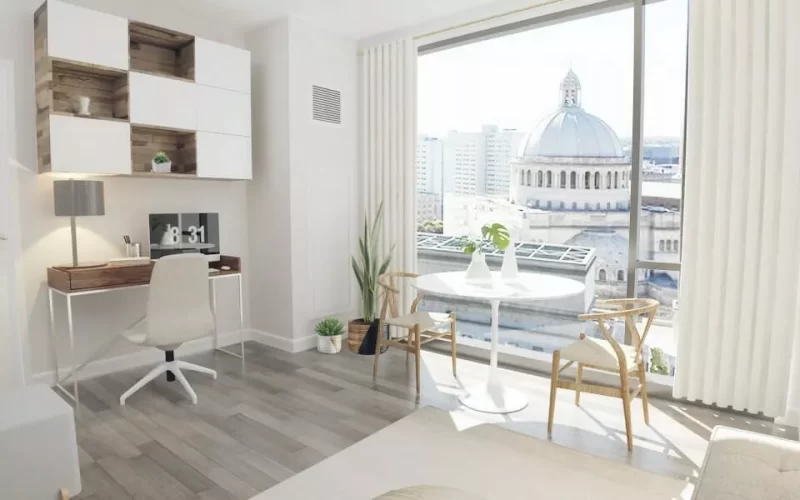
In response, Scandinavians seek solace within the confines of their homes, striving to create an environment that exudes light and comfort. This quest for brightness and coziness is reflected in their color choices, with a strong preference for paints with a high Light Reflectance Value (LRV). The following shades have emerged as key colors within the Scandinavian palette:
- Crisp Whites: Pure white hues, such as snow white or creamy off-white, are favored to enhance the perception of spaciousness and purity. These shades serve as a canvas for other design elements to shine.
- Soft Neutrals: Gentle neutral tones like warm grays, soft beiges, and subtle taupes create a calming backdrop, evoking a sense of tranquility and harmony with nature.
- Cool Blues: Inspired by the surrounding coastal landscapes, cool blues reminiscent of serene waters are often incorporated to add a refreshing touch. Shades like pale aqua, soft sky blue, or muted seafoam enhance the overall soothing atmosphere.
- Natural Greens: Drawing inspiration from the lush Scandinavian forests, soft and muted greens bring a touch of nature indoors. Shades like sage, moss, or fern can be used to infuse a sense of tranquility and vitality.
- Touches of Warmth: To counterbalance the cooler tones, touches of warm colors are introduced sparingly. Soft blush pinks, warm terracotta, or gentle hints of pale yellow can add subtle warmth and a welcoming ambiance.
These carefully selected colors, combined with an emphasis on natural light and cozy textures, work together to create an inviting and harmonious atmosphere within Scandinavian interiors. The resulting color palette exudes a sense of serenity and helps to counteract the environmental challenges imposed by the region’s climate.
Perfecting the Foundation: Finishing Touches in Scandinavian Interiors
When establishing the foundation of a Scandinavian interior, exclusive materials are not necessary, but quality is paramount. Furthermore, it is important to steer clear of excessive pretentiousness, intricacy, and relief. Instead, simplicity, serenity, softness, and a natural aesthetic are embraced.
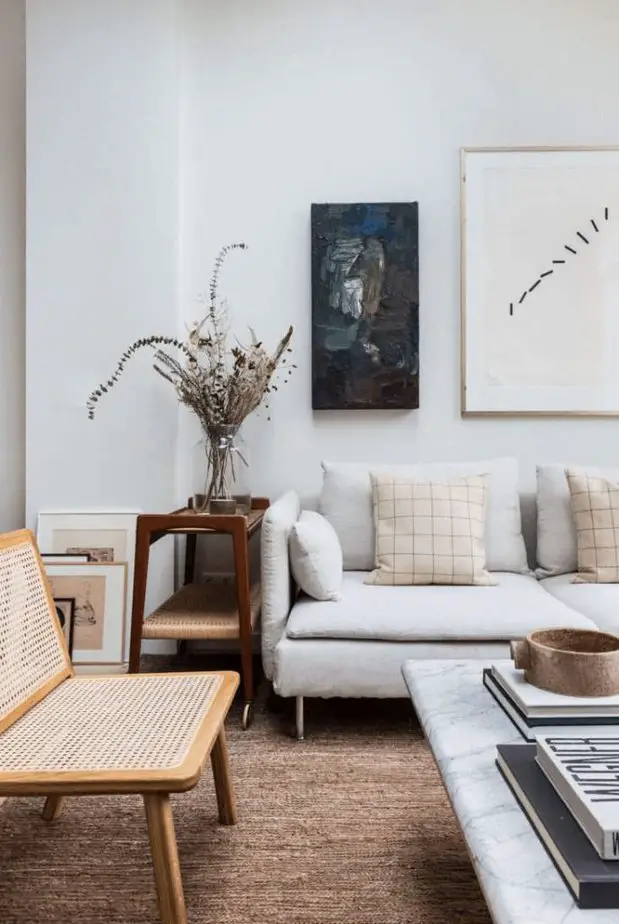
Walls
When it comes to walls in a Scandinavian Decor interior, plaster, and paint are the go-to options. Smooth walls painted with light-colored, high-light-reflecting paint are the epitome of appropriateness. However, there is room for slightly more intricate solutions, such as plastered brick, wooden panels, or light artificial stone inserts. Scandinavian wallpapers, on the other hand, are sparingly used. This is a practical decision, as the authentic interiors of Northern Europe experience high humidity and wallpapers might not withstand the conditions.
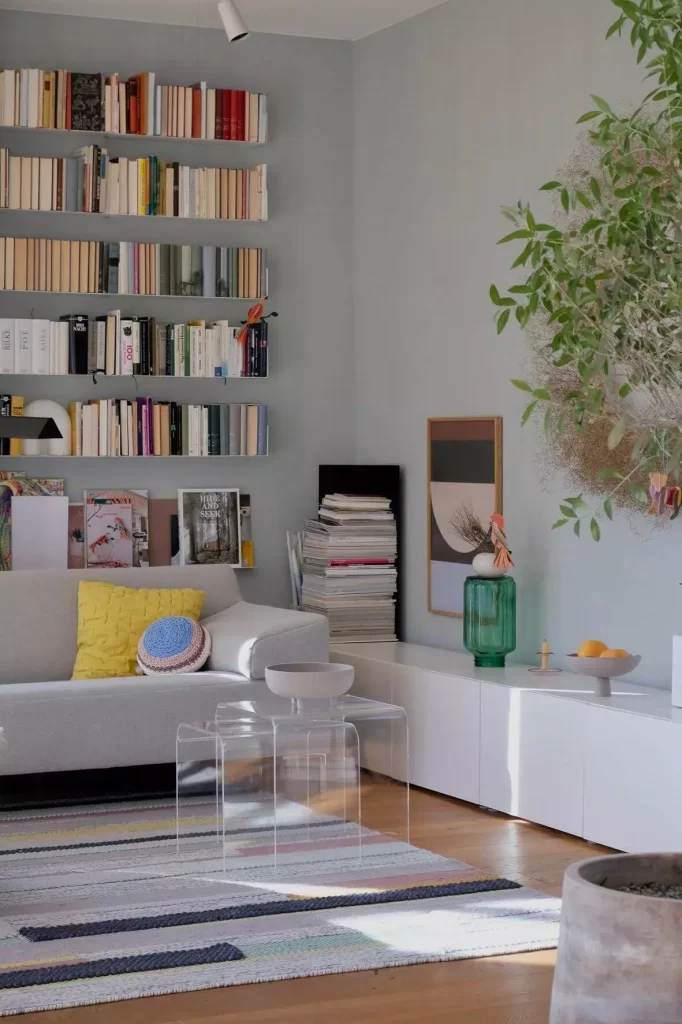
Aesthetic Serenity: Transforming Ceilings in Scandinavian Interior Design
Ceilings within Scandinavian-style homes and apartments embody a minimalistic and understated decorative approach. Opting for a whitewashed or lightly colored paint treatment is a foolproof choice. Another option is to utilize stretch ceiling structures, but it is essential to ensure that matte canvases are employed to maintain the desired aesthetic.
The Scandinavian design philosophy places a strong emphasis on simplicity and functionality, and this extends to the overhead space. By adopting a whitewashed or lightly colored ceiling, you create an atmosphere of spaciousness and luminosity. The light hues effortlessly reflect natural and artificial light sources, enhancing the overall brightness of the room.
Alternatively, stretch ceilings can be incorporated to achieve a sleek and seamless look. However, it is crucial to select matte finishes for the stretch ceiling material. This choice ensures that the ceiling remains harmonious with the overall design scheme, devoid of excessive shine or gloss.
In Scandinavian interior design, the ceiling serves as a subtle backdrop, allowing other elements to take center stage. By maintaining a minimalist approach to ceiling design, you foster a sense of tranquility and provide a visual canvas that complements the simplicity and elegance of the overall space.
Whether you choose to embrace the classic whitewashed look or opt for the contemporary appeal of a matte stretch ceiling, the key lies in aligning the ceiling treatment with the overarching principles of Scandinavian design. By doing so, you create an environment that emanates serenity and exemplifies the inherent beauty of simplicity.
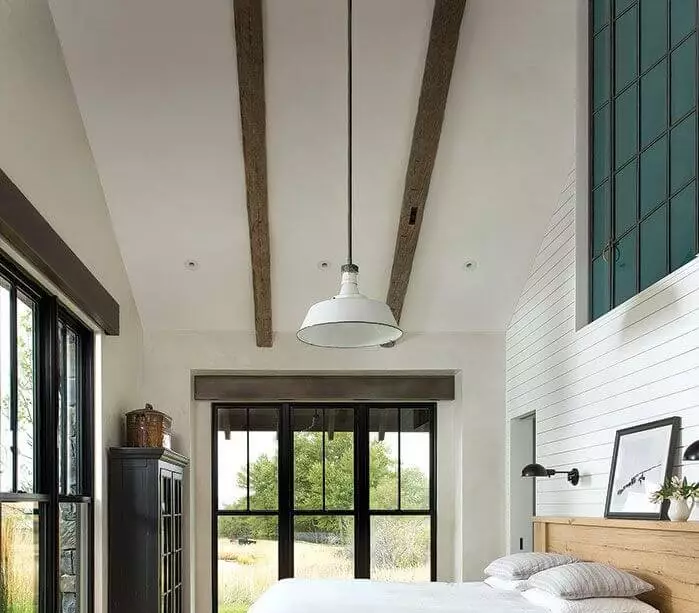
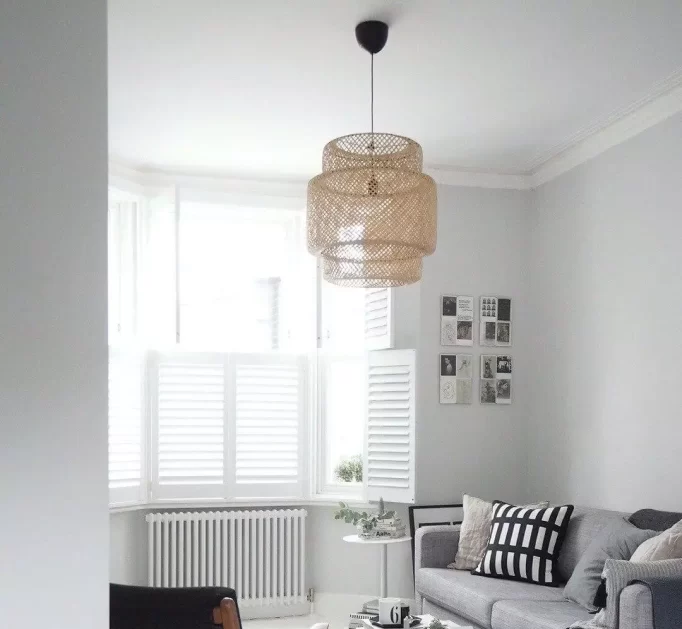
Embracing Natural Beauty: Flooring Choices in Scandinavian Interior Design
When it comes to flooring in Scandinavian-style interiors, the emphasis is on selecting high-quality materials that exude a natural and inviting ambiance. The preferred options include natural wood and other top-grade materials that offer a similar texture and aesthetic appeal. Parquet, wooden boards, and laminate are popular choices, showcasing warm golden tones that infuse the space with a sense of coziness. Additionally, light cool tones are also employed to create a refreshing atmosphere.
In Scandi decor, the flooring serves as an integral part of the overall aesthetic, harmonizing with the other elements in the space. Natural wood flooring is particularly favored for its inherent warmth and organic beauty. The rich golden shades of parquet and wooden boards create a welcoming environment, enveloping the room with a sense of comfort and timeless elegance.
Laminate flooring, with its ability to mimic the appearance of natural wood, offers a practical and cost-effective alternative. It allows for the same desired texture and aesthetic while offering durability and easy maintenance.
Light cool tones, such as pale gray or soft whitewashed finishes, are also embraced in Scandinavian flooring design. These lighter hues contribute to an airy and fresh feel, further enhancing the light-filled and open atmosphere often associated with Scandinavian interiors.
Regardless of the specific flooring material or color chosen, the key principle remains the same—natural and high-quality materials are paramount. The aim is to create a floor that complements the simplicity and beauty of the Scandinavian design aesthetic while providing a solid foundation for the rest of the interior elements to shine.
By opting for natural wood or high-quality materials with similar textures, you can achieve a flooring solution that seamlessly blends with the overall design scheme, enhancing the inviting and harmonious ambiance that defines Scandinavian interior design.
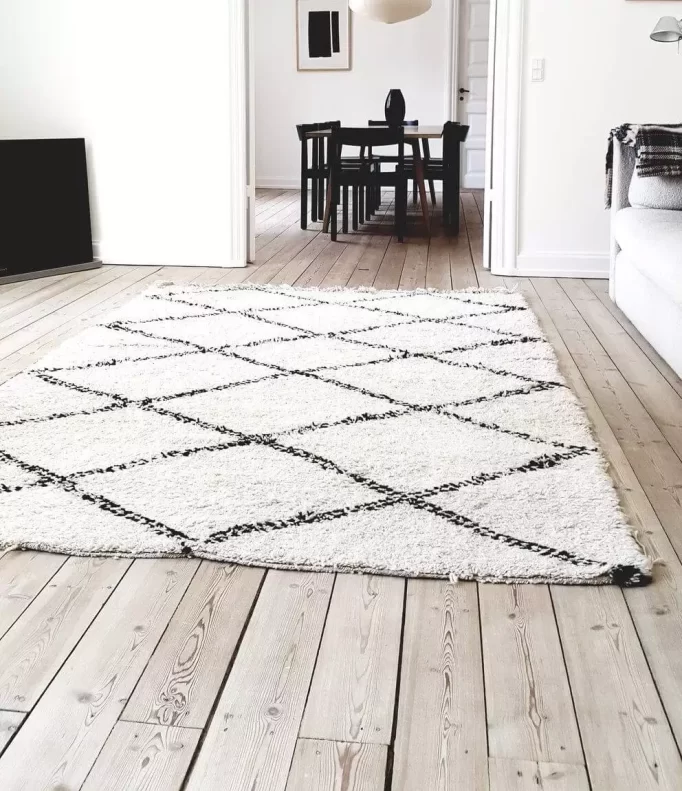
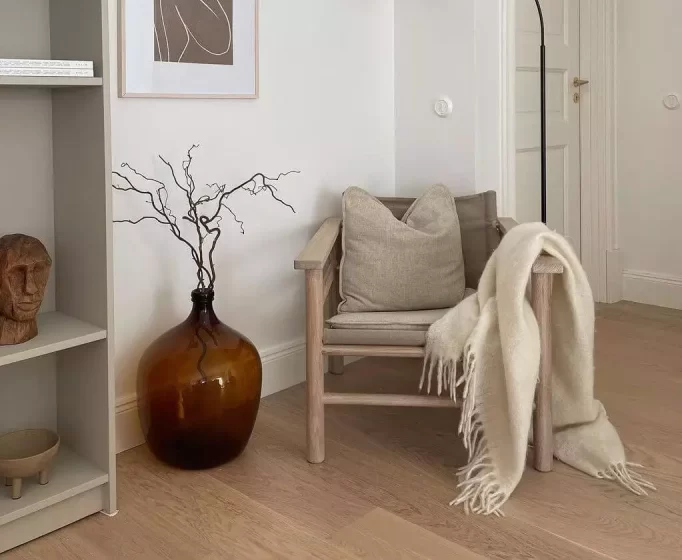
Embracing Timeless Elegance: Furniture in Scandinavian Interior Design
Authentic Scandinavian design enthusiasts are captivated by the remarkable patriotism ingrained in the residents of Northern Europe. They prioritize purchasing furniture from local designers whenever possible, remaining devoted to models created several decades ago. Iconic pieces such as the Egg and Swan chairs, the Stool 60 stool, and the Ant and Fanbyn chairs continue to be sought after, even after half a century since their inception.
In terms of Scandinavian furniture characteristics, simplicity, maximum comfort, and the use of natural materials take center stage. Incredibly comfortable sofas with clean and understated shapes, monochromatic upholstery, open shelving, and chairs with unpainted wooden legs are key elements in achieving the desired aesthetic. Soft ottomans and deep armchairs beckon you to sink in and experience the coveted feeling of hygge—a sense of cozy contentment.
Scandinavian design favors furniture that exudes a sense of lightness and airiness, shunning large and bulky cabinets in favor of ergonomic and concealed storage systems. This focus on functionality ensures that every piece of furniture serves a purpose while maintaining an uncluttered and harmonious living space.
For a more comprehensive understanding of Scandinavian-style furniture, exploring the catalogs of prominent Swedish manufacturers such as Furninova, Sits, and the renowned IKEA is highly recommended. These catalogs showcase an extensive range of designs that embody the principles of Scandinavian design—simplicity, functionality, and a celebration of natural materials.
By curating your living space with authentic Scandinavian furniture, you can create an environment that combines timeless elegance with modern sensibilities. Embrace the inviting allure of Scandinavian design and experience the comfort and beauty that comes from the thoughtful selection of furniture pieces that embody the essence of this beloved style.
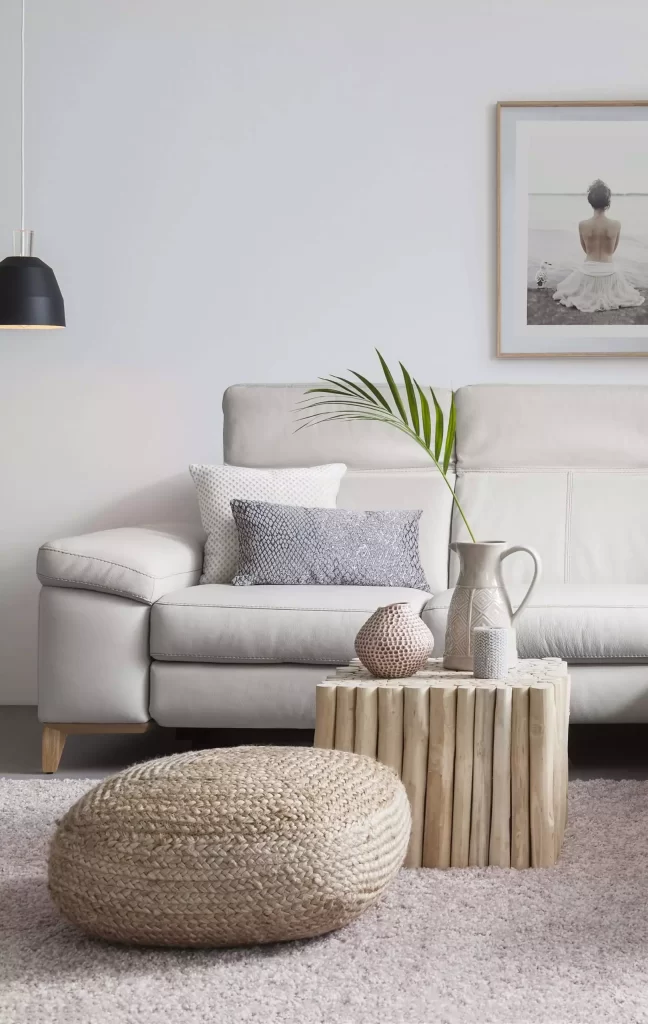
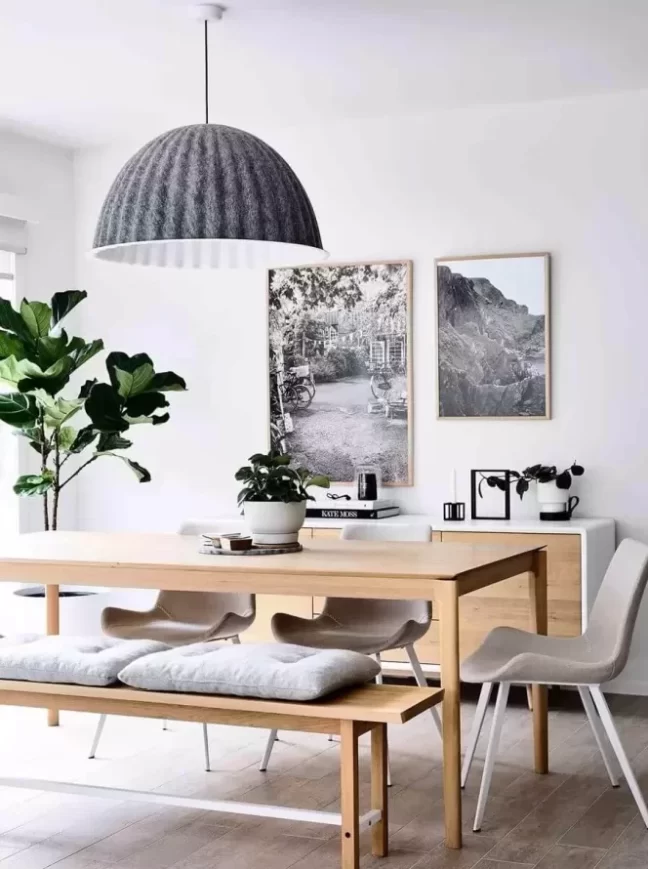
Illuminating Elegance: Lighting in Scandinavian Interior Design
Abundant light is a hallmark of Scandinavian-style homes, as it compensates for the limited daylight hours, especially during the winter months. In addition to natural light, artificial lighting plays a crucial role in creating a well-lit and inviting atmosphere throughout the space.
A diverse array of lamps are strategically incorporated into Scandinavian interiors to effectively illuminate both functional areas and the overall living environment. Lighting fixtures and floor lamps with simple geometric shapes made of metal or glass are characteristic of this style.
The design of the lamp bases offers a range of options, from industrial-inspired models with metal legs, racks, and brackets to minimalist suspension bulbs suspended from black or white cords. Cozier alternatives can feature light textile shades crafted from roughly cut snags or logs, adding a touch of rustic charm.
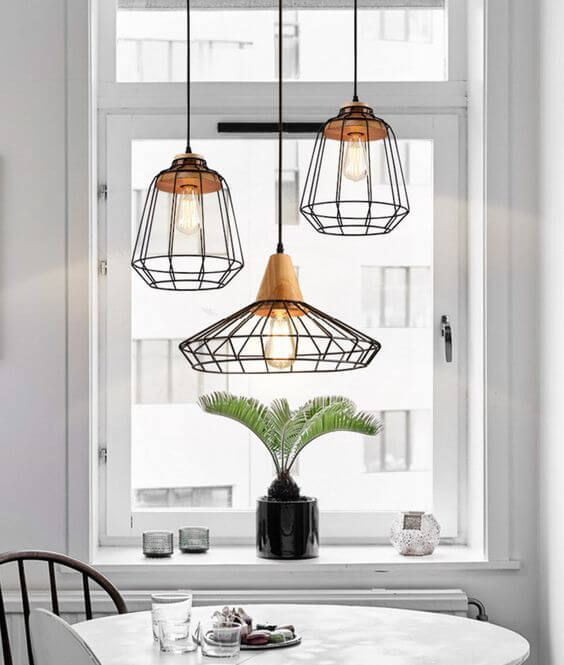
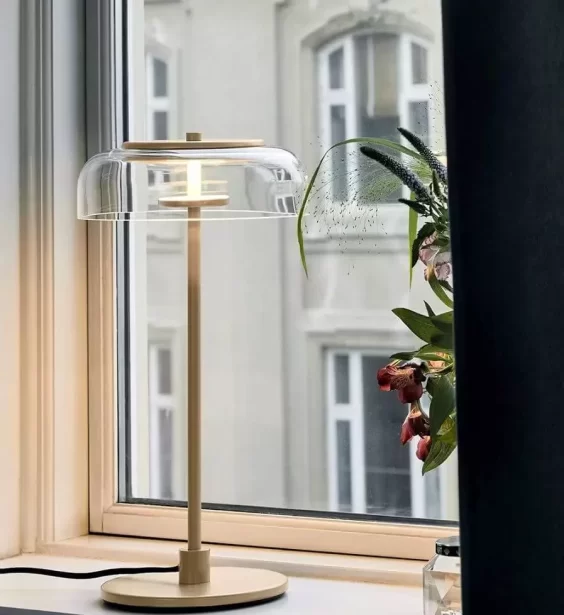
Inviting Warmth: Textiles in Scandinavian Interior Design
Textile elements play a vital role in Scandinavian interiors, as they serve to create a warm and cozy atmosphere. These abundant textile accents contribute to the charm and natural appeal of the space. Attention is placed on incorporating various textile pieces that add both visual and tactile comfort.
Plain curtains with a natural wool texture, linen, or cotton are favored in Scandinavian interiors. These curtains, whether in a classic or Roman blind style, offer a clean and understated look while allowing natural light to filter through. They provide privacy while maintaining a sense of openness.
Large knitted woolen blankets with tassels, adorned with patterns or in vibrant colors, are popular additions that bring texture and warmth to the space. These cozy blankets invite you to snuggle up and create an inviting ambiance, perfect for curling up on a chilly day.
Pillows play a decorative role in Scandinavian interiors, often featuring intricate patterns or bright colors to add visual interest and a pop of personality. They contribute to the overall cozy and inviting atmosphere, making seating areas more comfortable and visually appealing.
Carpets are another essential textile element in Scandinavian design. Monochromatic carpets, those with a homespun pattern, or those with a worn effect resembling plant fibers are commonly seen. These carpets provide a soft underfoot feel, absorb sound, and create visual warmth by grounding the space.
The careful selection and placement of textiles in Scandinavian interiors infuse the space with a sense of comfort and visual appeal. The combination of natural materials, subtle textures, and cozy patterns enhances the overall ambiance, inviting you to relax and enjoy the warm and inviting atmosphere of the Scandinavian style.
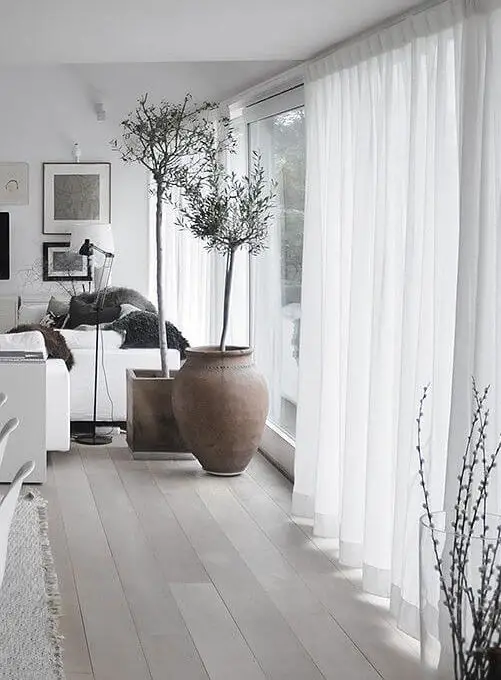
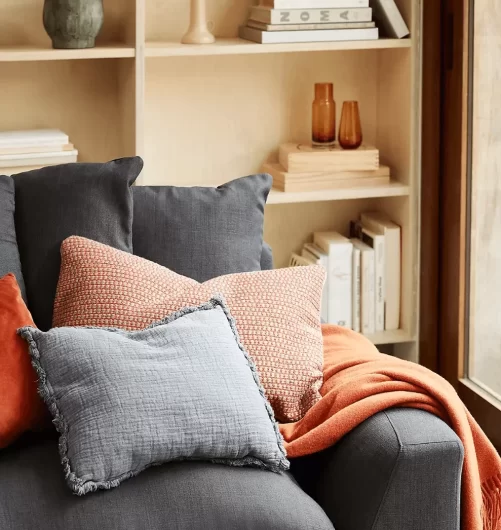
Adding Charm and Character: Decor in Scandinavian Interior Design
In line with the principles of simplicity, functionality, and equality, the Scandinavian style embraces a restrained approach to decor, avoiding excessive ornamentation or clutter. However, there are essential elements that contribute to the completeness of the interior and the cherished concept of hygge, which we have mentioned before. Alongside blankets and pillows, the following items are integral to achieving a well-rounded Scandinavian interior:
Posters and artwork play a vital role in preventing the space from appearing monotonous or dull. Graphic prints, vibrant abstractions, and nature-inspired motifs organically adorn the walls, either individually or in charming collages.
Bringing the outdoors in, flowers and plants are essential to create a sense of unity with nature, a cherished Scandinavian value. Wood and wicker pots are often used to house a variety of plants, including succulents, palms, and those with large glossy leaves. Dry bouquets, branches, and driftwood arranged in white ceramic or glass vases are equally popular.
Stylish storage containers and organizers add both functionality and aesthetic appeal to Scandinavian interiors. Wooden crates, wicker boxes, and baskets are often incorporated into typical Scandinavian racks. In modern interpretations, you may also find high-quality, monochromatic plastic storage elements that maintain a clean and organized look.
The hygge ambiance is further enhanced by the presence of candles in various glass, metal, and ceramic candlesticks. Wooden figurines featuring folklore motifs contribute to the cozy atmosphere. During winter holidays, Scandinavian interiors undergo a magical transformation, with an abundance of spruce wreaths, luminous garlands, traditional ornaments, and themed textiles.
By carefully selecting and integrating these decor elements, a Scandinavian interior can exude charm, warmth, and a touch of whimsy. The thoughtful incorporation of posters, greenery, stylish storage solutions, and seasonal accents adds personality and visual interest, while still maintaining the overall sense of simplicity and harmony that defines the Scandinavian style.
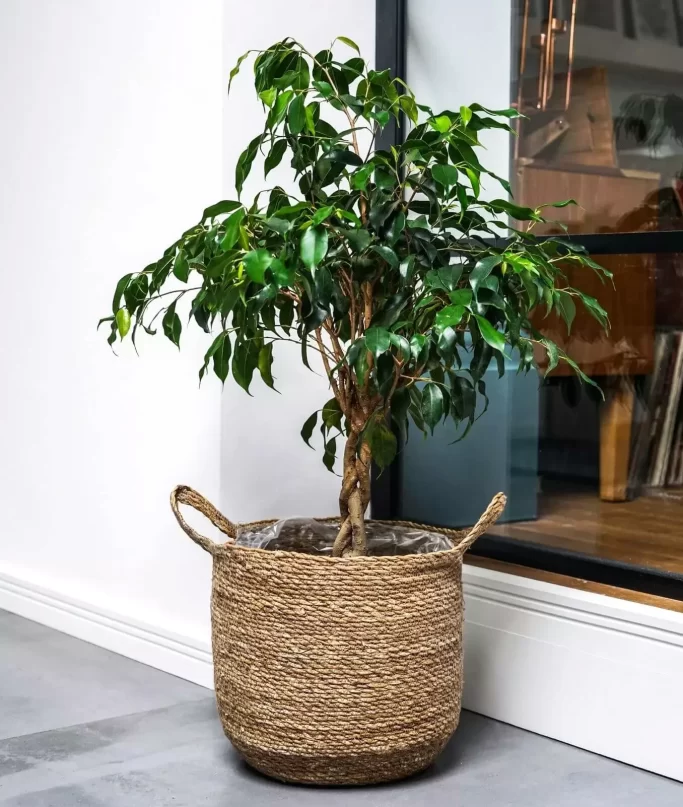
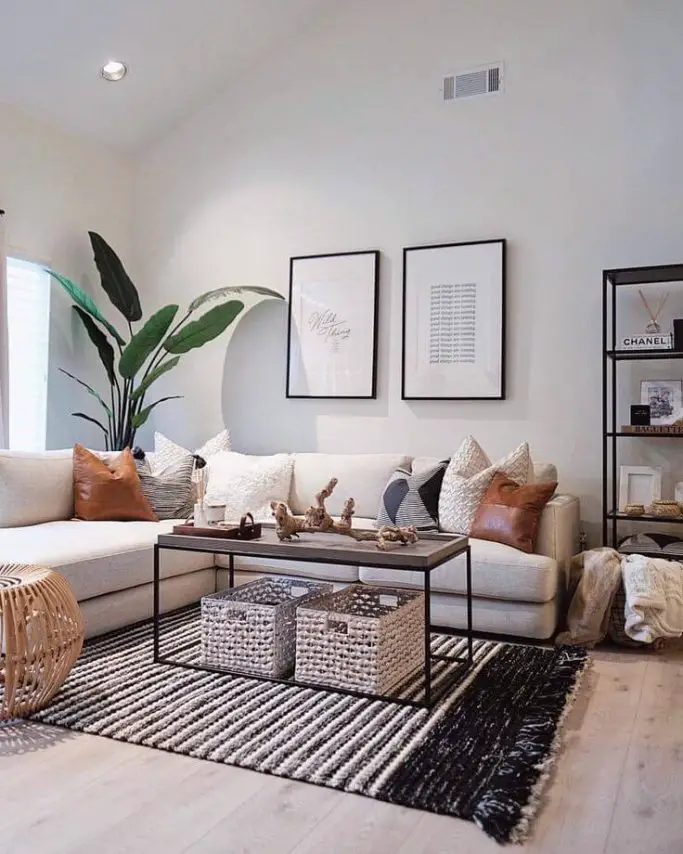
Embracing Contemporary Elegance: Modern Scandinavian Style
The Scandinavian style has evolved over time, giving rise to two distinct directions: traditional and modern. The traditional approach is characterized by a darker color palette dominated by black, white, and gray tones, an abundance of ornamental textiles, and influences from Gustavian design.
On the other hand, the modern Scandinavian style has adapted to the contemporary requirements and preferences of homeowners, offering a more democratic, functional, and visually appealing aesthetic. The key features of the modern Scandinavian style include:
- Lighter Palette: The color palette leans towards muted whites, soothing beiges, and calming taupe shades. These lighter tones create an airy and serene atmosphere, enhancing the overall sense of spaciousness.
- Bright Accents and Colors: Modern Scandi embraces the introduction of vibrant accents and colors to add personality and liveliness to the space. Splashes of red, yellow, blue, and sage green inject energy and create focal points within the otherwise neutral color scheme.
- Emphasis on Glass: Glass finds its place in modern Scandinavian interiors, serving multiple purposes. It is used for sliding partitions, tabletops, lighting fixtures, and accessories. The transparent nature of glass allows for unobstructed views and contributes to a sense of openness and lightness:
In addition to these key features, the modern Scandinavian style also emphasizes clean lines, minimalist forms, and functional design. It embraces the use of natural materials such as wood and leather and promotes a clutter-free and organized environment.
By blending contemporary aesthetics with the timeless principles of Scandinavian design, modern Scandi interiors offer a harmonious balance between functionality and visual appeal. The result is a stylish and welcoming living space that reflects the current needs and desires of today’s homeowners.
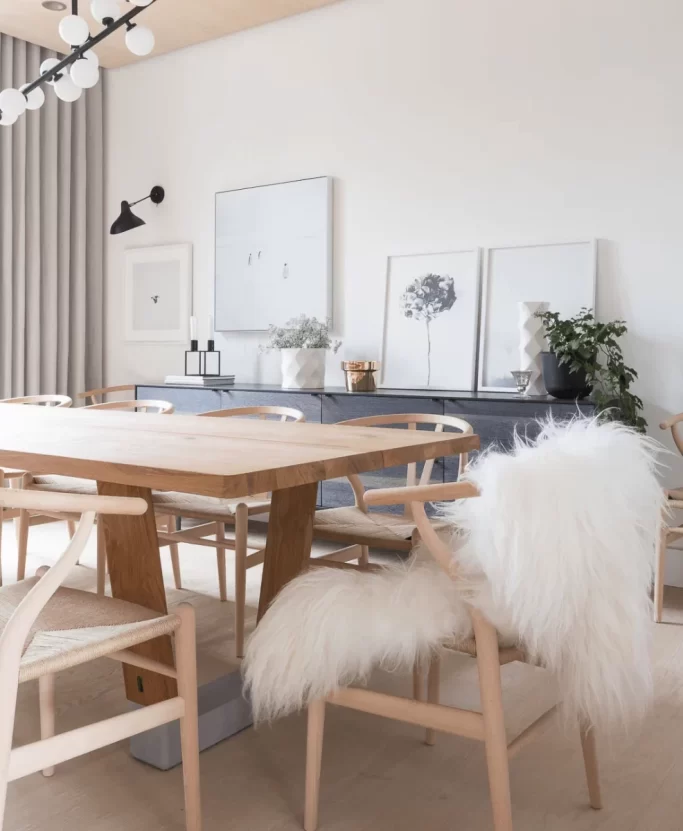
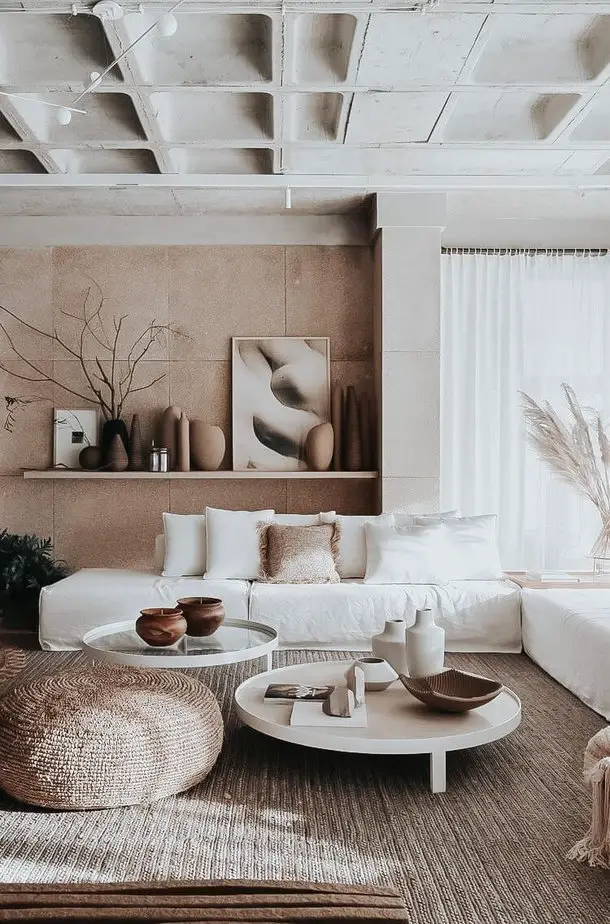
Scandinavian Style: A Timeless Trend
The question of whether the Scandinavian style is trendy now can be considered rhetorical, as its popularity is undeniable, even to those with a passing interest in design. For at least the past five years, this style has consistently topped the list of the most current interior design trends.
Today, it’s not just IKEA that offers comprehensive solutions for interior decoration in the spirit of Northern Europe, but manufacturers from all around the world as well. They provide a wide range of options, allowing individuals to select all the necessary elements, from sofas and carpets to coffee tables, artificial flowers, and kitchen accessories.
The enduring appeal of the Scandinavian style lies in its timeless qualities and universal aesthetic appeal. Its emphasis on simplicity, functionality, and natural materials resonates with people seeking a harmonious and cozy living environment. Scandinavian design has a knack for creating spaces that feel inviting, uncluttered, and effortlessly stylish.
Moreover, the clean lines, neutral color palettes, and minimalist approach of Scandinavian interiors make them adaptable to various design preferences and complement different architectural styles. Whether it’s a small apartment in the city or a spacious countryside home, the Scandinavian style can be tailored to suit individual needs and preferences.
In a world where trends come and go, the Scandinavian style has proven its longevity and versatility. Its enduring popularity speaks to its ability to create spaces that are both visually pleasing and functional. So, it’s safe to say that Scandinavian style continues to be a significant trend in interior design, offering a timeless and enduring appeal to those seeking a stylish and harmonious home.
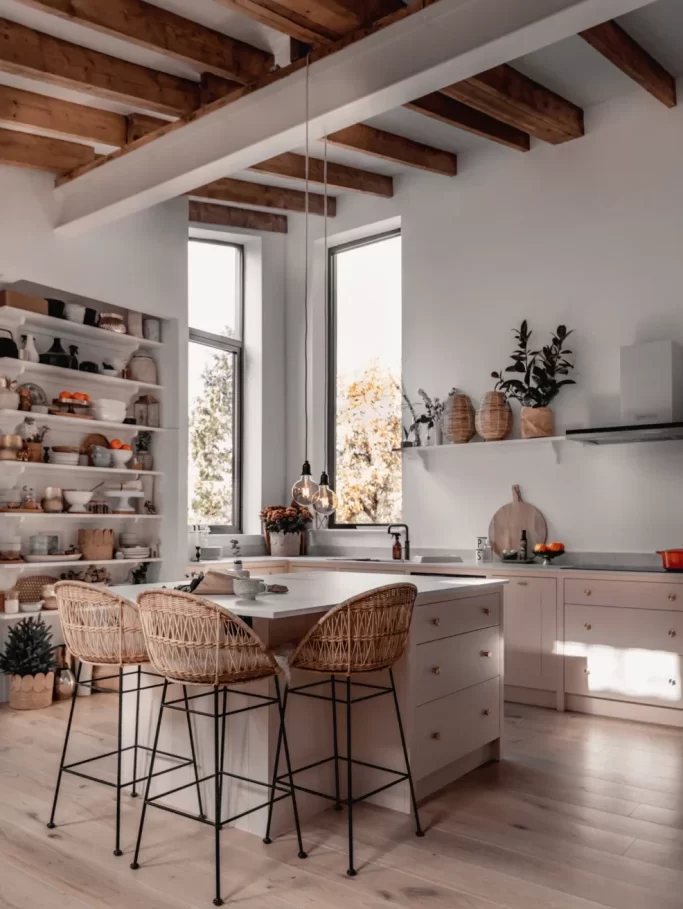

I joined Appartenville in February 2021 as a content editor. After studying English literature at university, I worked as an e-commerce website editor, content author, and purchasing intern for several independent luxury and lifestyle retail companies. My role at Appartenville combines my love, experience, and passion for the world of design and the desire to create inspiring written content. As for my personal style, I am a big fan of color and drawing, especially I like the pastel color scheme. I also enjoy discovering new trends, brands, and products, whether it’s fashion, interior design, or lifestyle my wish list for buying new things is endless.
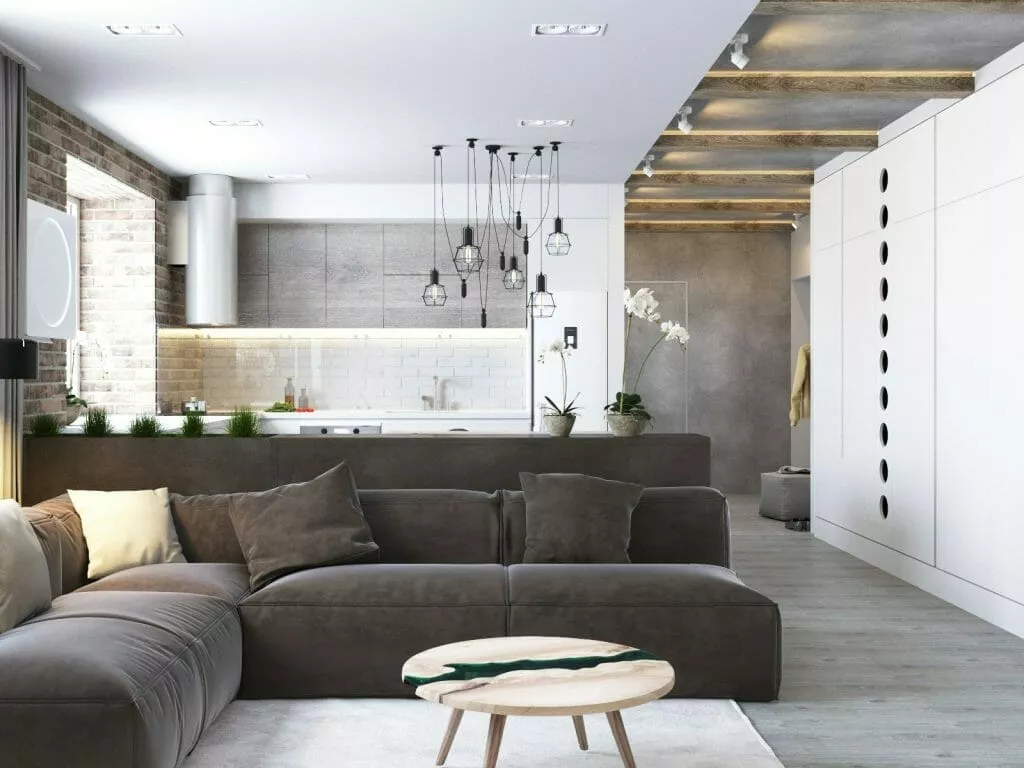
Leave a Reply